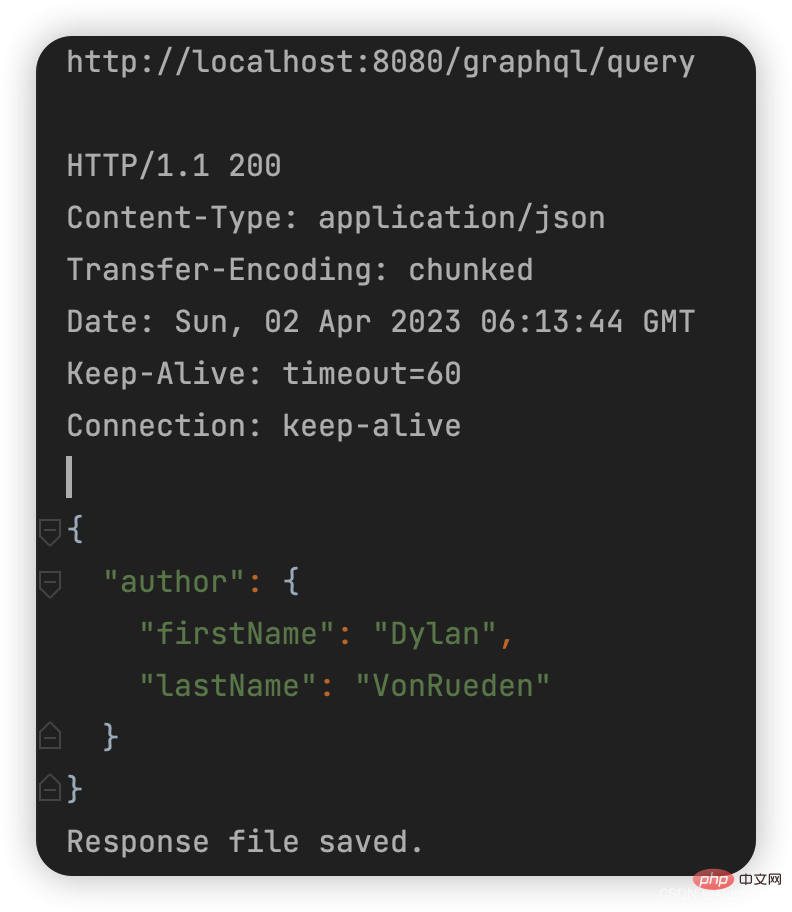
The traditional Restful API has many problems. First of all, it cannot control the fields returned, and the front-end cannot predict the return results of the back-end. In addition, different return results correspond to different request addresses. This is This resulted in multiple requests. GraphQL is an API query language built based on this background. Compared with traditional Restful API, it has the following advantages:
Flexibility: GraphQL can be flexible according to the needs of the client. Query data efficiently instead of returning fixed-structured data like RESTful API.
Reduce network requests: GraphQL allows clients to obtain multiple resources in a single request, which helps reduce the number of network requests and improve performance.
Strong typing: GraphQL has a strongly typed system that allows clients to detect errors in queries at compile time, which helps reduce runtime errors.
Cacheable: GraphQL is cacheable, which means the server can cache the results of a query, improving performance and scalability.
Documentation: GraphQL has the ability to self-document, allowing developers to quickly understand the structure and functions of the API.
If the back-end language is Java, then GraphQL Java is the basic library for implementing GraphQL. In addition, Spring has integrated GraphQL. If Spring is used in the project, Spring GraphQL is more recommended.
The development of Spring GraphQL is generally divided into the following steps
Add Spring GraphQL dependencies
Add Spring GraphQL dependencies in your project. You can add dependencies through build tools like Maven or Gradle. For example, if you use Maven, you can add the following dependency
<dependency>
<groupId>org.springframework.boot</groupId>
<artifactId>spring-boot-starter-graphql</artifactId>
</dependency>Define GraphQL Schema
Define GraphQL Schema in your application. Schema defines queryable types and fields. You can define a schema using SDL (Schema Definition Language) or programmatically.
For the Spring Boot project, the schema file is placed in the resources/graphql/ directory, and the file name is suffixed with graphqls. The following is a simple schema.graphqls that I defined.
It specifies two query implementations. author(id:Int) means querying the Author by id, and allAuthors means querying the Author array.
schema {
query: Query
}type Query {
author(id:Int): Author
allAuthors: [Author]
}type Author {
id:Int
firstName:String
lastName:String
email:String
birthdate:String
}
Implementing RuntimeWiringConfigurer
RuntimeWiringConfigurer is the core of implementing GraphQL to obtain data. Using GraphQL cannot directly remove persistence layer frameworks such as Mybatis/Jpa. Obtaining data from the database still requires the support of such frameworks.
The RuntimeWiringConfigurer is similar to the service layer in Spring, which is the core of implementing basic data.
The following is a simple example:
@Component
public class AuthorWiring implements RuntimeWiringConfigurer {
private final AuthorRepository authorRepository;
public AuthorWiring(AuthorRepository authorRepository) {
this.authorRepository = authorRepository;
}
@Override
public void configure(RuntimeWiring.Builder builder) {
builder.type("Query", typeWiring -> typeWiring
.dataFetcher("allAuthors", environment -> authorRepository.findAll())
.dataFetcher("author", environment -> authorRepository.getReferenceById(environment.getArgument("id")))
}
}Here, two DataFetcher objects are defined inside the configure method to specify how author and allAuthors query data. It can be seen that JPA is still used to query data. Query data.
Define GraphQL Controller
We define GraphQLController to receive the input parameters of web requests. The example is as follows:
@RestController
@RequestMapping("graphql")
public class GraphQLController {
private final GraphQL graphQL;
@Autowired
public GraphQLController(GraphQlSource graphQlSource) {
graphQL = graphQlSource.graphQl();
}
@PostMapping("query")
public ResponseEntity<Object> query(@RequestBody String query) {
ExecutionResult result = graphQL.execute(query);
return ResponseEntity.ok(result.getData());
}
}The GraphQL object in the code is the entrance to execute the query, but GraphQL There is only one private constructor, so it cannot be injected directly. You must obtain the GraphQL object by injecting GraphQlSource.
Note that in GraphQL we can only use String to receive parameters, and cannot use model objects. This is because the Graph request parameters are not json structures.
Test Graph request
We create a graphql.http file to perform http requests in idea
}Content-Type: application/json
Send POST request with json body
POST http://localhost:8080/graphql/query}
{
author(id: 1) {
id
firstName
lastName
birthdate
}POST http://localhost:8080/graphql/query
Send POST request with json bodyContent -Type: application/json
}
{
allAuthors {
id
firstName
lastName
birthdate
Run the query for author(id: 1) and you can see that the results are returned normally. If we only need the firstName and lastName fields, then just remove the id and birthdate from the request input parameters without changing any back-end code. 

The above is the detailed content of How SpringBoot uses GraphQL to develop Web API. For more information, please follow other related articles on the PHP Chinese website!
 SpringBoot project building steps
SpringBoot project building steps
 Get window handle method
Get window handle method
 The difference between rest api and api
The difference between rest api and api
 What is the difference between j2ee and springboot
What is the difference between j2ee and springboot
 Samsung s5830 upgrade
Samsung s5830 upgrade
 Features of raysource download tool
Features of raysource download tool
 What does a file extension usually mean?
What does a file extension usually mean?
 Detailed process of upgrading win7 system to win10 system
Detailed process of upgrading win7 system to win10 system




